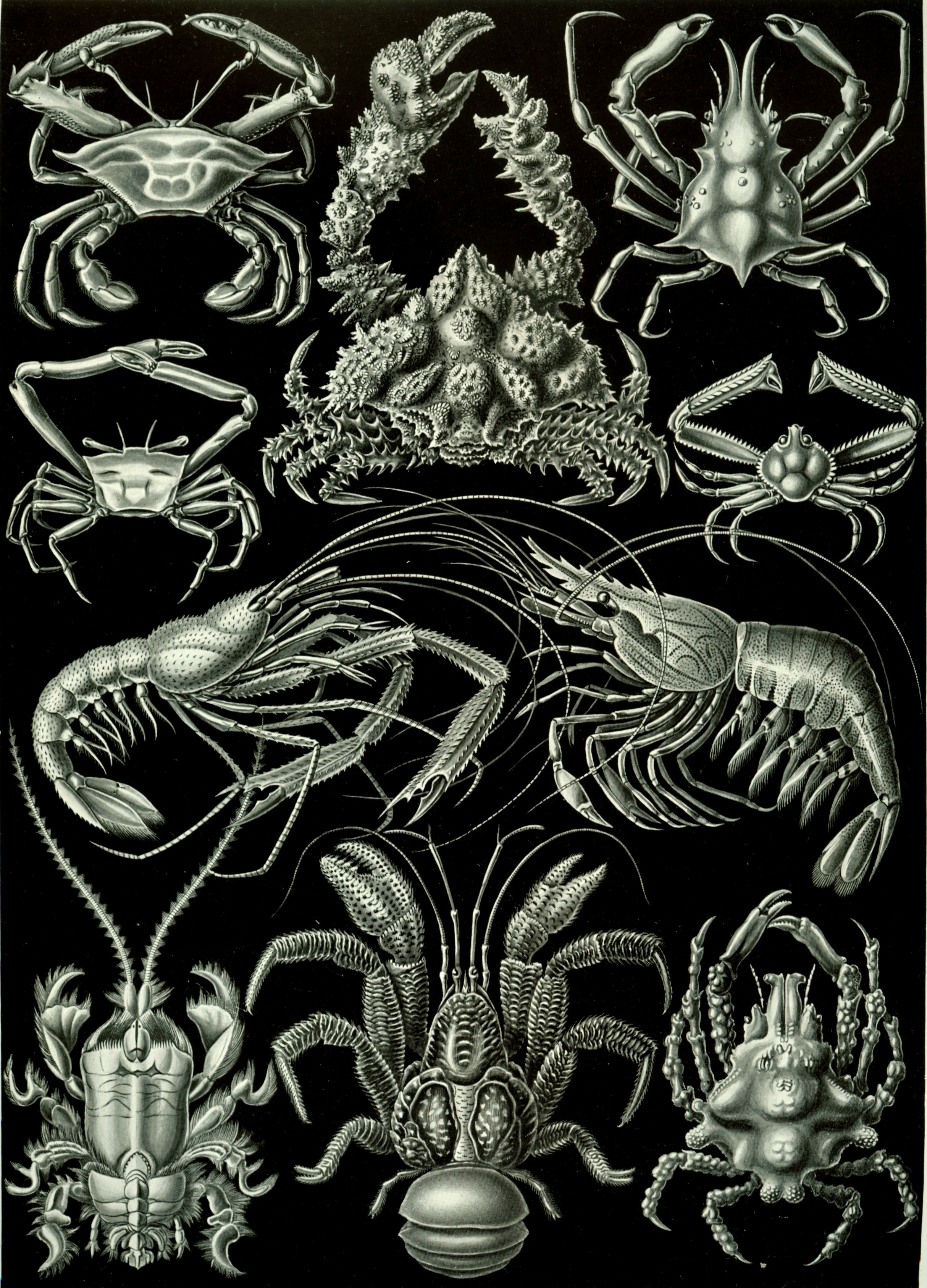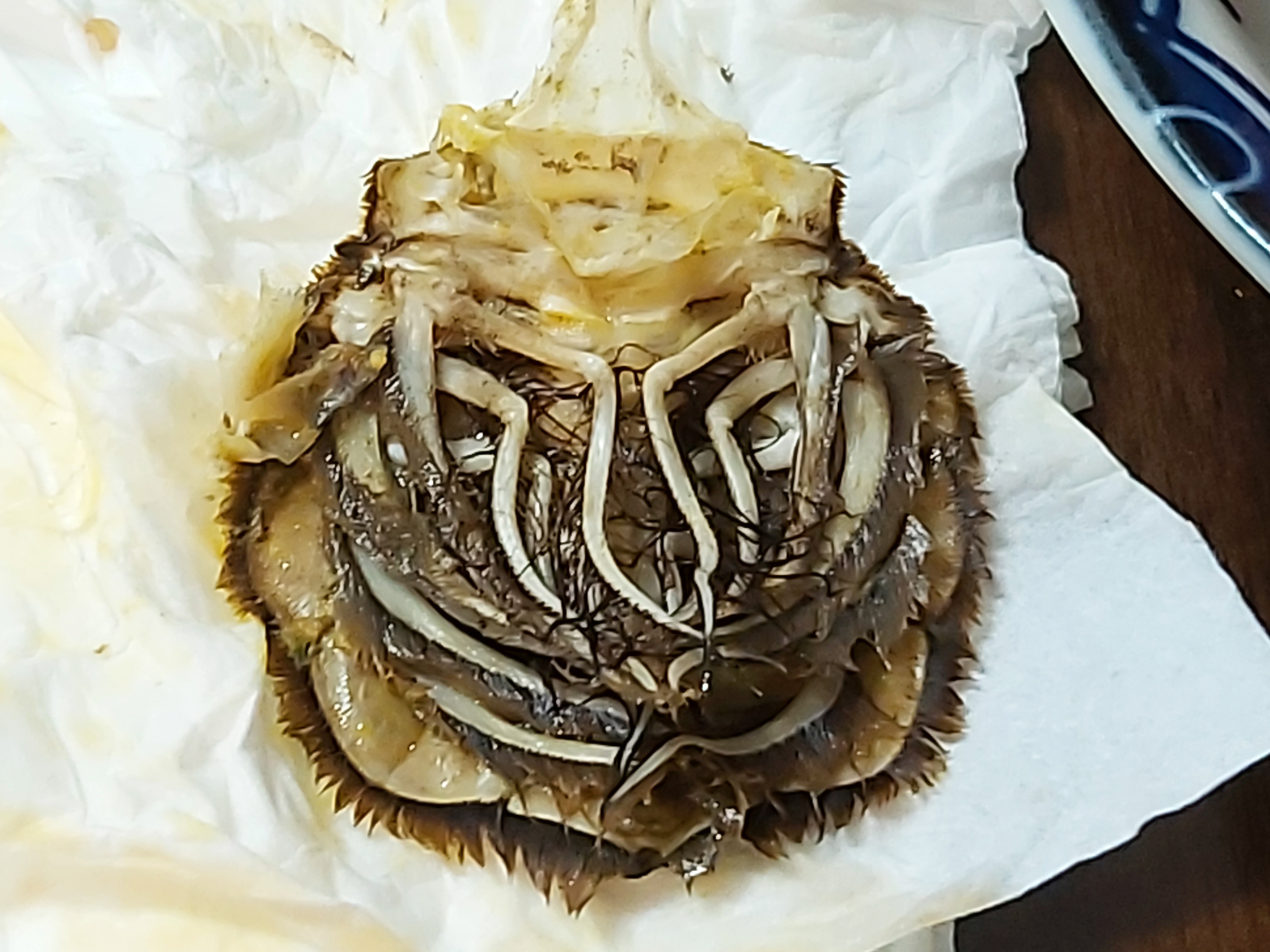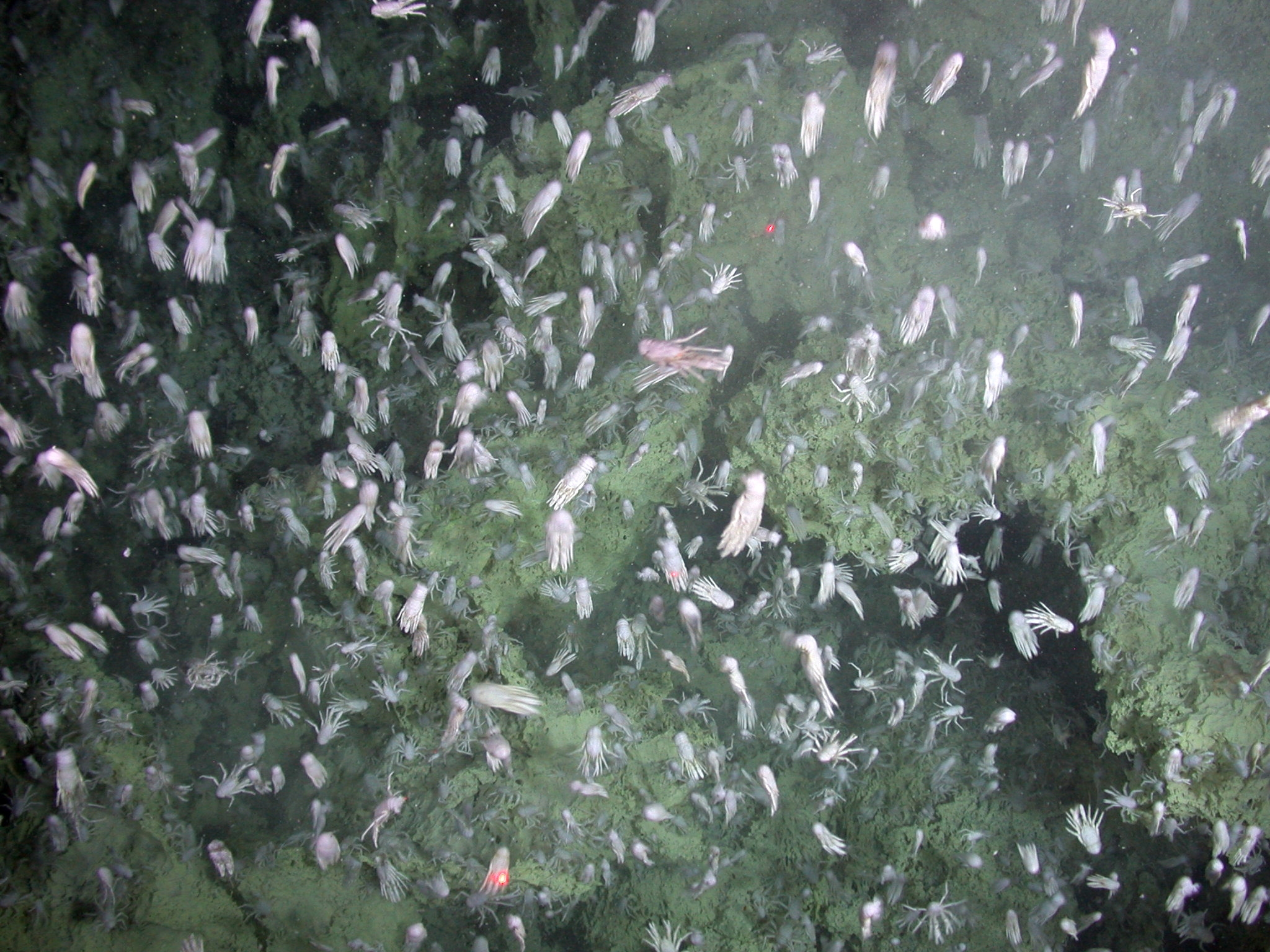|
Decapod Genera
The Decapoda or decapods, from Ancient Greek δεκάς (''dekás''), meaning "ten", and πούς (''poús''), meaning "foot", is a large order (biology), order of crustaceans within the class Malacostraca, and includes crabs, lobsters, crayfish, Caridea, shrimp, and Dendrobranchiata, prawns. Most decapods are scavengers. The order is estimated to contain nearly 15,000 extant species in around 2,700 genera, with around 3,300 fossil species. Nearly half of these species are crabs, with the shrimp (about 3,000 species) and Anomura including hermit crabs, king crabs, porcelain crabs, squat lobsters (about 2500 species) making up the bulk of the remainder. The earliest fossils of the group date to the Devonian. Anatomy Decapods can have as many as 38 appendages, arranged in one pair per body segment. As the name Decapoda (from the Greek language, Greek , ', "ten", and , '':wikt:-pod, -pod'', "foot") implies, ten of these appendages are considered legs. They are the pereiopods, foun ... [...More Info...] [...Related Items...] OR: [Wikipedia] [Google] [Baidu] |
Grapsus Grapsus
''Grapsus grapsus'' is one of the most common crabs along the western coast of the Americas. It is known as the red rock crab, or, along with other crabs such as ''Percnon gibbesi'', as the Sally Lightfoot crab. Distribution ''Grapsus grapsus'' is found along the Pacific coast of Mexico, Central America, and South America (as far south as northern Peru), and on nearby islands, including the Galápagos Islands. It is also found along the Atlantic coast of South America, but is replaced in the eastern Atlantic Ocean (Ascension Island and West Africa) by its congener ''Grapsus adscensionis''. Description ''Grapsus grapsus'' is a typically shaped crab, with five pairs of legs, the front two bearing small, blocky, symmetrical Chela (organ), chelae (claws). The other legs are broad and flat, with only the tips touching the substrate. The crab's round, flat carapace is slightly longer than . Young ''G. grapsus'' are black or dark brown in colour and are camouflaged well on the bla ... [...More Info...] [...Related Items...] OR: [Wikipedia] [Google] [Baidu] |
Crayfish
Crayfish are freshwater crustaceans belonging to the infraorder Astacidea, which also contains lobsters. Taxonomically, they are members of the superfamilies Astacoidea and Parastacoidea. They breathe through feather-like gills. Some species are found in brooks and streams, where fresh water is running, while others thrive in swamps, ditches, and paddy fields. Most crayfish cannot tolerate polluted water, although some species, such as '' Procambarus clarkii'', are hardier. Crayfish feed on animals and plants, either living or decomposing, and detritus. The term "crayfish" is applied to saltwater species in some countries. Terminology The name "crayfish" comes from the Old French word ' ( Modern French '). The word has been modified to "crayfish" by association with "fish" ( French language">Modern French '). The word has been modified to "crayfish" by association with "fish" ( American variant "crawfish" is similarly derived. Some kinds of crayfish are known lo ... [...More Info...] [...Related Items...] OR: [Wikipedia] [Google] [Baidu] |
Pereiopod
The anatomy of a decapod consists of 20 body segments grouped into two main body parts: the cephalothorax and the pleon (abdomen). Each segment – often called a somite – may possess one pair of appendages, although in various groups these may be reduced or missing. Cephalothorax Head # antennules # antennae # mandibles # first maxillae # second maxillae The head also bears the (usually stalked) compound eyes. The distal portion of a mandible or maxilla which has a sensory function is known as a palp. Thorax / pereon #first maxillipeds #second maxillipeds #third maxillipeds #first pereiopods #second pereiopods #third pereiopods #fourth pereiopods #fifth pereiopods Maxillipeds are appendages modified to function as mouthparts. Particularly in the less advanced decapods, these can be very similar to the pereiopods. Pereiopods are primarily walking legs and are also used for gathering food. They are also the ten legs from which decapods take their name. Those pereiopods which ... [...More Info...] [...Related Items...] OR: [Wikipedia] [Google] [Baidu] |
Greek Language
Greek (, ; , ) is an Indo-European languages, Indo-European language, constituting an independent Hellenic languages, Hellenic branch within the Indo-European language family. It is native to Greece, Cyprus, Italy (in Calabria and Salento), southern Albania, and other regions of the Balkans, Caucasus, the Black Sea coast, Asia Minor, and the Eastern Mediterranean. It has the list of languages by first written accounts, longest documented history of any Indo-European language, spanning at least 3,400 years of written records. Its writing system is the Greek alphabet, which has been used for approximately 2,800 years; previously, Greek was recorded in writing systems such as Linear B and the Cypriot syllabary. The Greek language holds a very important place in the history of the Western world. Beginning with the epics of Homer, ancient Greek literature includes many works of lasting importance in the European canon. Greek is also the language in which many of the foundational texts ... [...More Info...] [...Related Items...] OR: [Wikipedia] [Google] [Baidu] |
Devonian
The Devonian ( ) is a period (geology), geologic period and system (stratigraphy), system of the Paleozoic era (geology), era during the Phanerozoic eon (geology), eon, spanning 60.3 million years from the end of the preceding Silurian period at million years ago (Megaannum, Ma), to the beginning of the succeeding Carboniferous period at Ma. It is the fourth period of both the Paleozoic and the Phanerozoic. It is named after Devon, South West England, where rocks from this period were first studied. The first significant evolutionary radiation of history of life#Colonization of land, life on land occurred during the Devonian, as free-spore, sporing land plants (pteridophytes) began to spread across dry land, forming extensive coal forests which covered the continents. By the middle of the Devonian, several groups of vascular plants had evolved leaf, leaves and true roots, and by the end of the period the first seed-bearing plants (Pteridospermatophyta, pteridospermatophyt ... [...More Info...] [...Related Items...] OR: [Wikipedia] [Google] [Baidu] |
Squat Lobster
Squat lobsters are dorsoventrally flattened crustaceans with long tails held curled beneath the cephalothorax. They are found in the two superfamilies Galatheoidea and Chirostyloidea, which form part of the decapod infraorder Anomura, alongside groups including the hermit crabs and mole crabs. They are distributed worldwide in the oceans, and occur from near the surface to deep sea hydrothermal vents, with one species occupying caves above sea level. More than 900 species have been described, in around 60 genera. Some species form dense aggregations, either on the sea floor or in the water column, and a small number are commercially fished. Description The two main groups of squat lobsters share most features of their morphology. They resemble true lobsters in some ways, but are somewhat flattened dorsoventrally, and are typically smaller, ranging from 0.7 to 3.5 inches in length. Squat lobsters vary in postorbital carapace length (measured from the eye socket to the r ... [...More Info...] [...Related Items...] OR: [Wikipedia] [Google] [Baidu] |
Porcelain Crab
Porcelain crabs are decapod crustaceans in the widespread family Porcellanidae, which superficially resemble true crabs. They have flattened bodies as an adaptation for living in rock crevices. They are delicate, readily losing limbs when attacked, and use their large claws for maintaining territories. They first appeared in the Tithonian age of the Late Jurassic epoch, 145–152 million years ago. Description Porcelain crabs are small, usually with body widths less than . They share the general body plan of a squat lobster, but their bodies are more compact and flattened, an adaptation for living and hiding under rocks. Porcelain crabs are quite fragile animals, and often shed their limbs to escape predators, hence their name. The lost appendage can grow back over several moults. Porcelain crabs have large chelae (claws), which are used for territorial struggles, but not for catching food. The fifth pair of pereiopods is reduced and used for cleaning. Evolution Porcelain cra ... [...More Info...] [...Related Items...] OR: [Wikipedia] [Google] [Baidu] |



